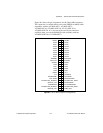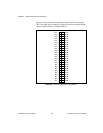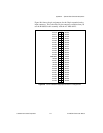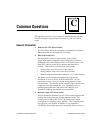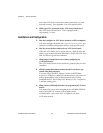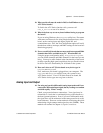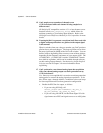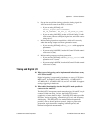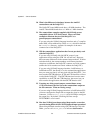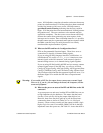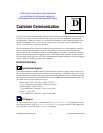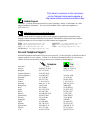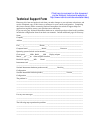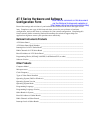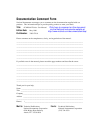
Appendix C Common Questions
AT-MIO/AI E Series User Manual C-6
National Instruments Corporation
20. What is the difference in timebases between the Am9513
counter/timer and the DAQ-STC?
The DAQ-STC-based MIO boards have a 20 MHz timebase. The
Am9513-based MIO boards have a 1 MHz or 5 MHz timebase.
21. The counter/timer examples supplied with NI-DAQ are not
compatible with an AT E Series board. Where can I find
examples to illustrate the use of the DAQ-STC as a
general-purpose counter/timer?
If you are using the NI-DAQ language interface and a C compiler
under DOS, a new subdirectory called GPCTR, which lies beneath
the examples directory, contains 16 examples of the most
common uses of the DAQ-STC.
22. Will the counter/timer applications that I wrote previously work
with the DAQ-STC?
If you are using NI-DAQ with LabVIEW, some of your
applications drawn using the CTR VIs will still run. However,
there are many differences in the counters between the AT E Series
and other boards; the counter numbers are different, timebase
selections are different, the DAQ-STC counters are 24-bit counters
(unlike the 16-bit counters on boards without the DAQ-STC).
If you are using NI-DAQ language interface, LabWindows, or
LabWindows/CVI, the answer is, no, the counter/time applications
that you wrote previously will not work with the DAQ-STC. You
must use the GPCTR functions; ICTR and CTR functions will not
work with the DAQ-STC. The GPCTR functions have the same
capabilities as the ICTR and CTR functions, plus more, but you
must rewrite the application with the GPCTR function calls.
23. I’m using one of the general-purpose counter/timers on my
AT E Series board, but I do not see the counter/timer output on
the I/O connector. What am I doing wrong?
If you are using NI-DAQ language interface or LabWindows/CVI,
you must configure the output line to output the signal to the I/O
connector. Use the Select_Signal call in NI-DAQ to configure
the output line. By default, all timing I/O lines except
EXTSTROBE* are tri-stated.
24. How does NI-DAQ treat bogus missed data transfer errors that
can arise during DMA-driven GPCTR buffered-input operations?
When doing buffered transfers using GPCTR function calls with
DMA, you can call GPCTR_Watch to indicate dataTransfer



